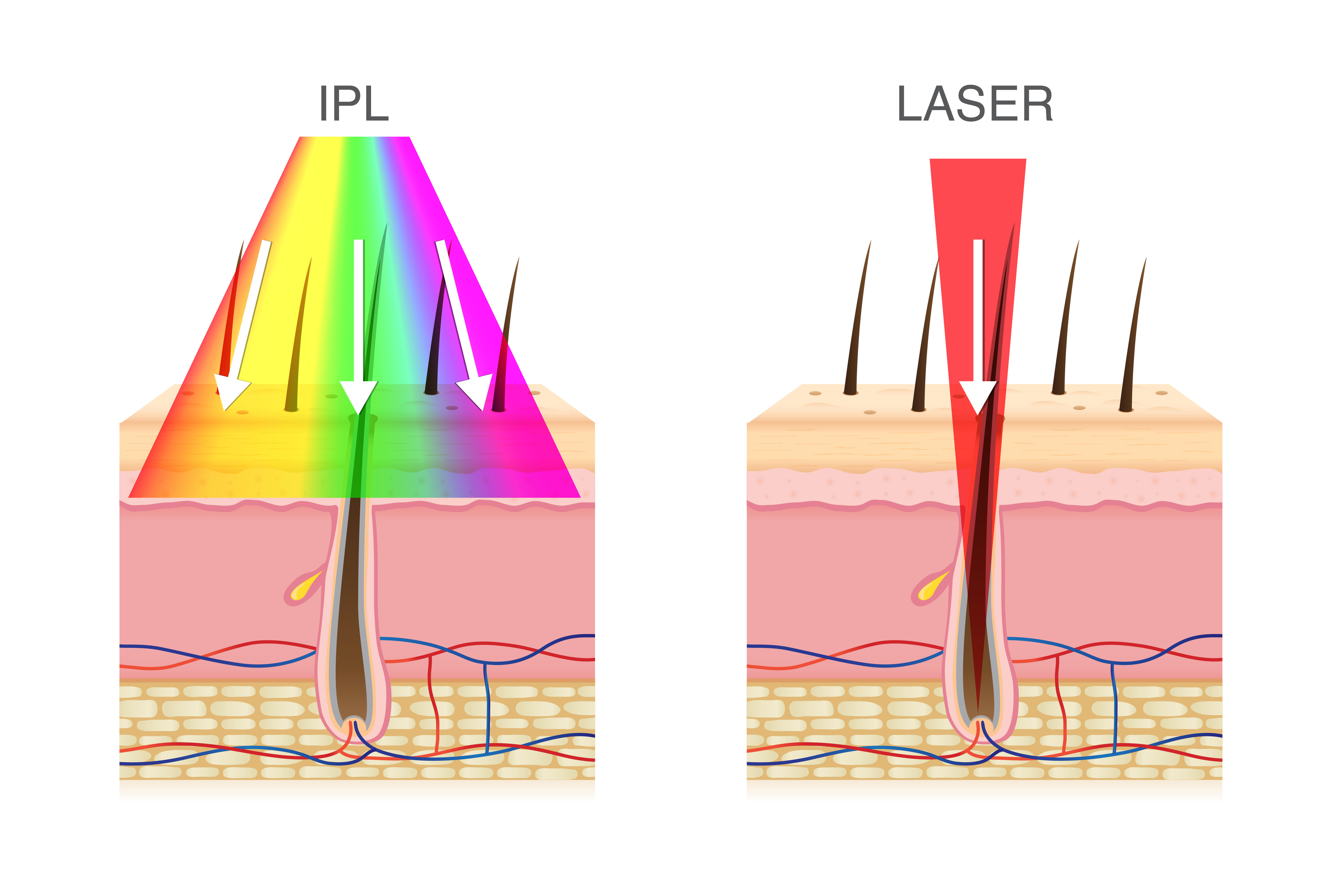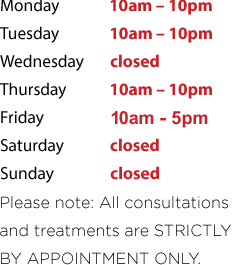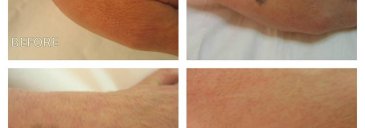Hair Removal

Why come to Gresford Skin & Laser Clinic for unwanted hair removal?
Our trained staff ensure that you are treated in a safe and suitable environment.
We select our treatments and products carefully, only offering those that can deliver what they promise.
We listen to our clients, to understand their objectives and desires…
We comply with legal and professional standards. We comply with legal and voluntary regulations, we select products that have been appropriately licensed; we use appropriately qualified and skilled practitioners for each type of treatment.
How does laser hair removal work?
Laser and flashlamp assisted hair removal involves the use of light to destroy hairs in such a way as to inhibit their re-growth for as long as possible.
The cycle of hair growth has three distinct phases: growing, transition and resting. Light assisted hair removal will only successfully treat hairs in the growing phase and it is for this reason that multiple treatments are required. The percentage of hairs in each stage of the cycle, as well as the duration of each phase, will vary for different body sites and for different people.
Based on the theory of selective photothermolysis, success depends on the absorption of light by the melanin contained in the hair in preference to the melanin in the skin. The light emitted uses the melanin in the hair to travel down into the hair follicle which is heated rapidly leading to the destruction of both the hair follicle and shaft. The damage caused will delay or in some cases prevent future hair re-growth.
Because the light is absorbed by melanin, the procedure works best on people with fair skin and dark hair. It is not recommended on dark or sun-tanned skins, or for people with blonde or grey hair.
Basic treatment procedure:
The area to be treated should be clipped or shaved to leave visible stubble and a clear gel applied to cool the skin during treatment. The clinician can then move the handpiece over the area to be treated. The end-points are erythema and localised swelling around each hair follicle. A cooling gel or ice pack can be applied to the area post treatment to help cool the skin and ease any patient discomfort.
HAIR REMOVAL FACTS
Questions and answers about Hair Removal
How is the laser treatment carried out?
A thin layer of gel is applied to the skin prior to treatment to ensure optimal transmission of light from the laser applicator to the skin. This also has a cooling effect on the skin making the treatment more comfortable. A rectangular quartz applicator is then placed in contact with the skin’s surface. Light is then pulsed through the quartz onto the skin to destroy the hair follicle. This process is repeated several times and the patient wears protective eye goggle throughout the treatment
Which patients can be treated?
- Black hairs are the most easily treated due to the large concentration of melanin in these hairs, which gives an optimal absorption and conversion of light energy to heat.
- Fair hair has less melanin and consequently less heat is produced with less certainty of permanent destruction of the hair follicles.
- Grey (white) hair has almost no melanin and cannot be effectively treated.
- The upper skin layer, the epidermis, also contains melanin and the concentration increases when the skin is exposed to UV light.
- It is therefore necessary to treat dark-skinned individuals with less energy to avoid generation of heat and discomfort, and we recommend that tanned patients are not treated at all.
- The ideal patient is fair skinned with dark hair but the computer has pre-programmed treatment suggestions for different hair and pigment types.
Does it hurt?
As the light energy is taken up by the skin pigments (melanin and haemoglobin), any discomfort depends upon the combined concentration of melanin in the epidermis and the hairs. No anaesthesia is required. Most patients describe the discomfort as moderate and acceptable, and liken it to a rubber band being fired against the skin. A skin cooling device is used during/post treatment to reduce any discomfort, redness or skin heating.
Does I need to shave prior to treatment?
Hair should be shaved a couple of days prior to treatment. Plucking, waxing or bleaching should not be carried out. By avoiding epilation or waxing for 4 weeks before treatment, it can be ensured that as many follicles as possible contain a hair and thus can be destroyed by the light.
Why do hairs “grow” after treatment?
Unlike some other systems, the hairs are not evaporated by the treatment. The hair follicles are killed by the heat but the hairs remain in the follicles. They will fall out after 1-3 weeks as the epidermis is renewed. During this period it will seem that the hairs are growing as they are pushed out by the epidermis.
How can I tell if the treatment has worked when the hairs are not removed immediately?
A red ring around each follicle is often seen a few minutes after treatment, along with reddening of the skin. These end points indicate that sufficient heating of the follicles has taken place. However they are not always seen. Many patients have successful treatment results without the post-treatment signs.
What are the side effects?
The visible light is completely safe so no special precautions are needed apart from glasses for the brightness. The skin of some patients becomes quite red immediately after treatment. However, most patients experience no side effects and the described skin reactions usually disappear within hours to a few days. Very rarely hyperpigmentation, hypopigmentation or blistering may occur.
How many treatments are necessary?
Only hair in the growth phase can be treated. The number of hairs in this phase varies from 10-70%. The length of the growth cycle also varies. After the first treatment, most patients get significant reduction in hair density. Treatment sessions are recommended every 4-6 weeks. The number of sessions needed varies, but the usual number is 6-10.
How do I prepare for treatment?
Any moisturisers and makeup must be removed prior to treatment. Patients should avoid tanning and must not use any fake tan 4 weeks ahead of and during the entire treatment period to avoid excessive discomfort from light absorption in the epidermis. Immediately after the treatment the skin is particularly sensitive to UV light, and strong sunlight should be avoided for 1-2 weeks.
How long does treatment take?
A facial treatment usually takes 15 minutes whereas both legs or an entire back takes approximately 2 hours.
Is permanent hair removal possible?
As the technology is only a few years old we do not know for definite how long the treatment is effective, but it seems to be very long term.
Please download Hair Removal Brochure
Prices are available on request.
Book an appointment today. Call 01978 854411 or email: tanya@gresfordskincareclinic.co.uk




